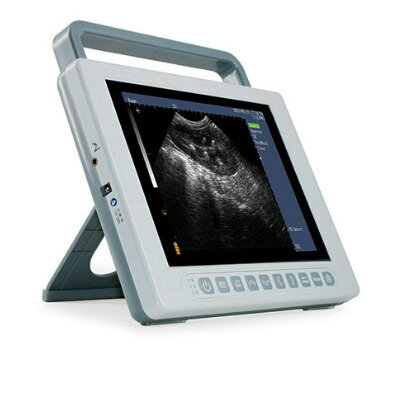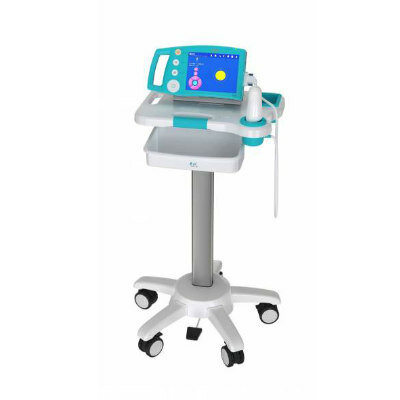Breakthrough AI Digital Biomarker Tool Rapidly Identifies Lung Fibrosis on CT Scans
|
By MedImaging International staff writers Posted on 19 Jan 2024 |

Lung fibrosis, a critical group of diseases impacting hundreds of thousands annually, includes idiopathic pulmonary fibrosis (IPF) which is particularly known for its severity. Current treatments for IPF are not only costly but can also be harmful if administered to unsuitable patients. Typically, there's a delay of about two and a half years in diagnosing this condition following the appearance of the first symptoms. This delay is critical as severe lung damage or even death could occur within one to two years from the onset of lung fibrosis. To address this challenge, a groundbreaking digital biomarker solution uses artificial intelligence (AI) to guide safe, non-invasive diagnosis of lung fibrosis with a focus on IPF.
IMVARIA Inc.’s (Berkeley, CA, USA) Fibresolve is a software-only device that processes and interprets lung computed tomography (CT) imaging data. Its primary purpose is to aid in diagnosing ILD by offering a diagnostic subtype classification for suspected cases. Before considering more invasive diagnostic methods, data from patients with suspected ILD is run on Fibresolve which utilizes IMVARIA’s AI algorithm to analyze the data and provide valuable non-invasive adjunct information for classification. This tool aids clinicians in quickly determining an accurate diagnosis, enabling them to administer appropriate treatments sooner. Moreover, Fibresolve offers a cost-effective alternative, potentially saving thousands of dollars per test and benefiting the overall health system financially.
Fibresolve’s results are designed for use by clinicians specializing in lung disease, particularly those managing ILD patients. These results should be interpreted in conjunction with the patient's clinical history, symptoms, other diagnostic tests, and the clinician's expert judgment. The U.S. Food and Drug Administration (FDA) has granted marketing authorization for Fibresolve, making it the first FDA-approved diagnostic tool for lung fibrosis.
“Fibresolve serves as an adjunct to clinicians in assessing patients with suspected lung fibrosis to provide a diagnostic subtype classification, potentially facilitating proper treatments at an earlier stage of the disease process,” said Joshua Reicher, MD, Co-founder and CEO of IMVARIA. “The FDA’s authorization of Fibresolve marks a significant milestone, not only for lung fibrosis patients but also for the advancement of AI-based healthcare technologies.”
“For people living with the rapidly deteriorating symptoms of this rare, yet deadly disease, the FDA authorization of Fibresolve offers real hope, while giving doctors who treat these patients a new, powerful tool that is designed to save lives and reduce suffering at an exponential rate that only AI can deliver,” added Michael Muelly, MD, Co-founder and CTO of IMVARIA. “This truly is a major step forward in advancing digital healthcare through the use of AI in the hands of medical doctors.”
Latest General/Advanced Imaging News
- New AI Method Captures Uncertainty in Medical Images
- CT Coronary Angiography Reduces Need for Invasive Tests to Diagnose Coronary Artery Disease
- Novel Blood Test Could Reduce Need for PET Imaging of Patients with Alzheimer’s
- CT-Based Deep Learning Algorithm Accurately Differentiates Benign From Malignant Vertebral Fractures
- Minimally Invasive Procedure Could Help Patients Avoid Thyroid Surgery
- Self-Driving Mobile C-Arm Reduces Imaging Time during Surgery
- AR Application Turns Medical Scans Into Holograms for Assistance in Surgical Planning
- Imaging Technology Provides Ground-Breaking New Approach for Diagnosing and Treating Bowel Cancer
- CT Coronary Calcium Scoring Predicts Heart Attacks and Strokes
- AI Model Detects 90% of Lymphatic Cancer Cases from PET and CT Images
- Breakthrough Technology Revolutionizes Breast Imaging
- State-Of-The-Art System Enhances Accuracy of Image-Guided Diagnostic and Interventional Procedures
- Catheter-Based Device with New Cardiovascular Imaging Approach Offers Unprecedented View of Dangerous Plaques
- AI Model Draws Maps to Accurately Identify Tumors and Diseases in Medical Images
- AI-Enabled CT System Provides More Accurate and Reliable Imaging Results
- Routine Chest CT Exams Can Identify Patients at Risk for Cardiovascular Disease
Channels
Radiography
view channel
Novel Breast Imaging System Proves As Effective As Mammography
Breast cancer remains the most frequently diagnosed cancer among women. It is projected that one in eight women will be diagnosed with breast cancer during her lifetime, and one in 42 women who turn 50... Read more
AI Assistance Improves Breast-Cancer Screening by Reducing False Positives
Radiologists typically detect one case of cancer for every 200 mammograms reviewed. However, these evaluations often result in false positives, leading to unnecessary patient recalls for additional testing,... Read moreMRI
view channel
PET/MRI Improves Diagnostic Accuracy for Prostate Cancer Patients
The Prostate Imaging Reporting and Data System (PI-RADS) is a five-point scale to assess potential prostate cancer in MR images. PI-RADS category 3 which offers an unclear suggestion of clinically significant... Read more
Next Generation MR-Guided Focused Ultrasound Ushers In Future of Incisionless Neurosurgery
Essential tremor, often called familial, idiopathic, or benign tremor, leads to uncontrollable shaking that significantly affects a person’s life. When traditional medications do not alleviate symptoms,... Read more
Two-Part MRI Scan Detects Prostate Cancer More Quickly without Compromising Diagnostic Quality
Prostate cancer ranks as the most prevalent cancer among men. Over the last decade, the introduction of MRI scans has significantly transformed the diagnosis process, marking the most substantial advancement... Read moreUltrasound
view channel
Deep Learning Advances Super-Resolution Ultrasound Imaging
Ultrasound localization microscopy (ULM) is an advanced imaging technique that offers high-resolution visualization of microvascular structures. It employs microbubbles, FDA-approved contrast agents, injected... Read more
Novel Ultrasound-Launched Targeted Nanoparticle Eliminates Biofilm and Bacterial Infection
Biofilms, formed by bacteria aggregating into dense communities for protection against harsh environmental conditions, are a significant contributor to various infectious diseases. Biofilms frequently... Read moreNuclear Medicine
view channel
New SPECT/CT Technique Could Change Imaging Practices and Increase Patient Access
The development of lead-212 (212Pb)-PSMA–based targeted alpha therapy (TAT) is garnering significant interest in treating patients with metastatic castration-resistant prostate cancer. The imaging of 212Pb,... Read moreNew Radiotheranostic System Detects and Treats Ovarian Cancer Noninvasively
Ovarian cancer is the most lethal gynecological cancer, with less than a 30% five-year survival rate for those diagnosed in late stages. Despite surgery and platinum-based chemotherapy being the standard... Read more
AI System Automatically and Reliably Detects Cardiac Amyloidosis Using Scintigraphy Imaging
Cardiac amyloidosis, a condition characterized by the buildup of abnormal protein deposits (amyloids) in the heart muscle, severely affects heart function and can lead to heart failure or death without... Read moreImaging IT
view channel
New Google Cloud Medical Imaging Suite Makes Imaging Healthcare Data More Accessible
Medical imaging is a critical tool used to diagnose patients, and there are billions of medical images scanned globally each year. Imaging data accounts for about 90% of all healthcare data1 and, until... Read more
Global AI in Medical Diagnostics Market to Be Driven by Demand for Image Recognition in Radiology
The global artificial intelligence (AI) in medical diagnostics market is expanding with early disease detection being one of its key applications and image recognition becoming a compelling consumer proposition... Read moreIndustry News
view channel
Bayer and Google Partner on New AI Product for Radiologists
Medical imaging data comprises around 90% of all healthcare data, and it is a highly complex and rich clinical data modality and serves as a vital tool for diagnosing patients. Each year, billions of medical... Read more





















